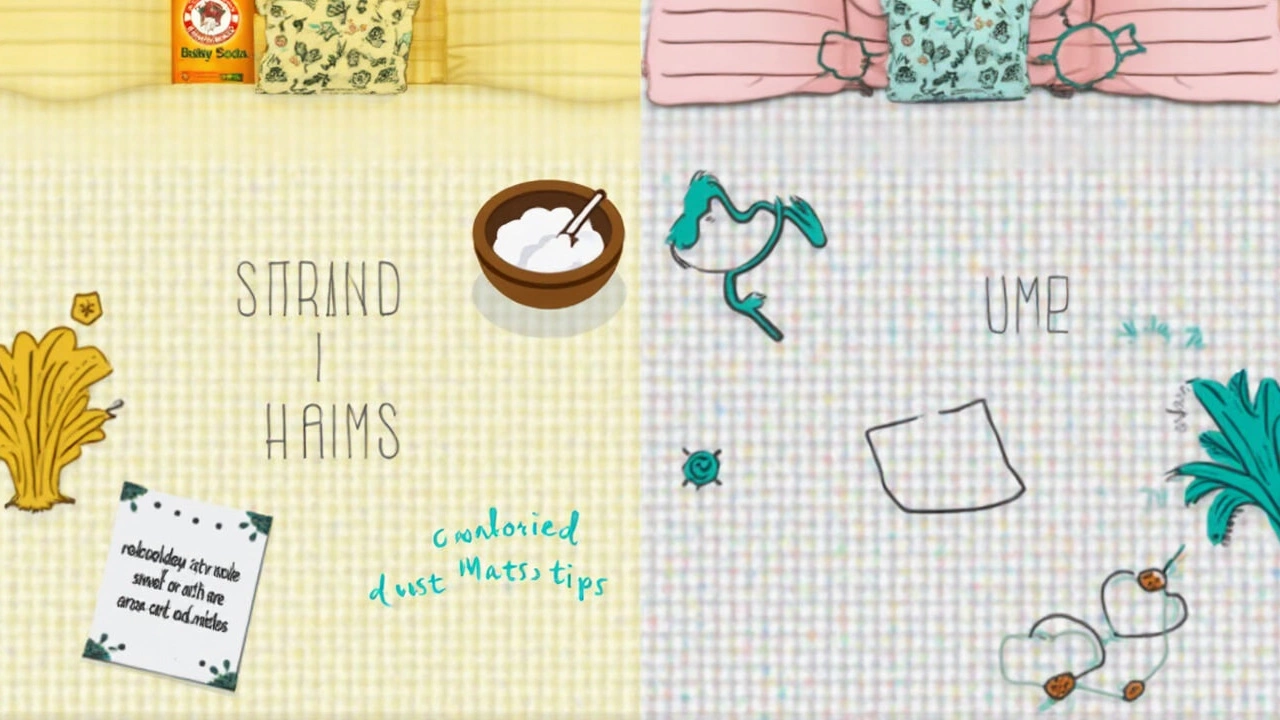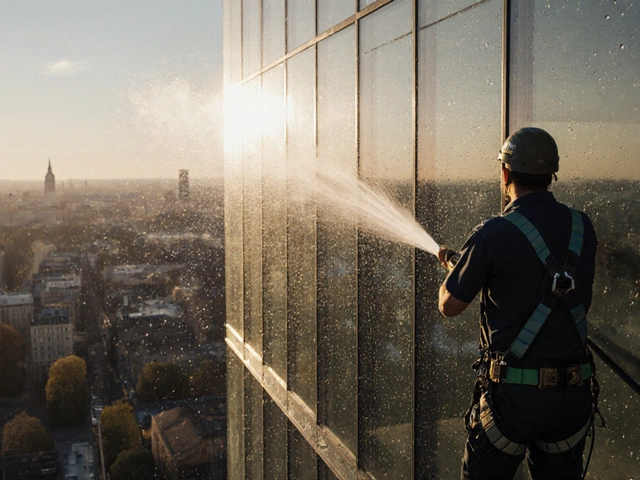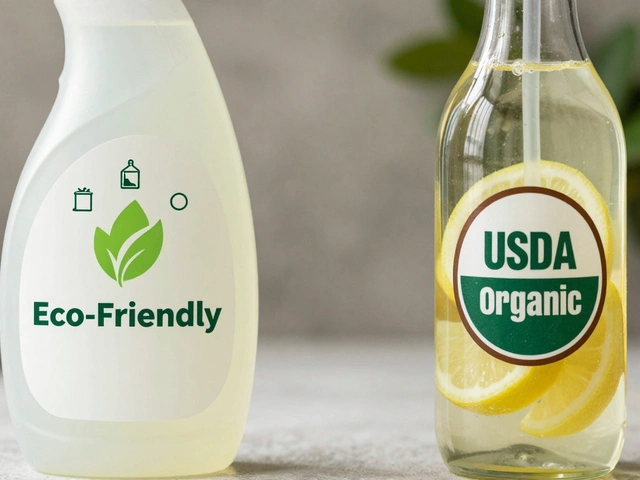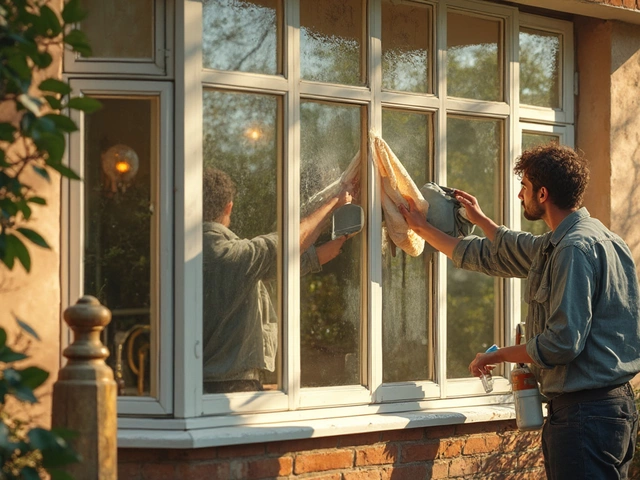If you’ve ever googled ways to clean a funky mattress, you’ve probably seen baking soda pop up everywhere. But is it actually worth the hype, or is it just another internet trick that doesn’t really work?
Baking soda definitely has some perks. It absorbs leftover smells—so if your mattress is smelling a little musty or sweaty, it’s one of the best quick fixes you’ll find in your kitchen. Plus, it’s cheap, safe, and you probably already have a box hiding in the cupboard.
The downside? Baking soda isn’t magic. It won’t eat up old yellow stains, and it isn’t going to zap germs all on its own. But it can help lift surface grime and freshen things up—especially if you’ve got pets or kids who turn your bed into a snack zone.
For anyone sweating over chemical cleaners or just wanting to keep things simple, this powder's a solid backup. Want to know how to actually get results (and what not to do)? Let’s see how far baking soda can really take your mattress cleaning game.
- What Happens When You Use Baking Soda on a Mattress?
- Can Baking Soda Kill Bacteria or Remove Tough Stains?
- Easy Steps to Try at Home
- What to Avoid So You Don't Damage Your Mattress
- Other Tricks to Level Up Your Mattress Cleaning
What Happens When You Use Baking Soda on a Mattress?
When you sprinkle baking soda on a mattress, it acts like a tiny sponge for smells. It grabs onto things like sweat and old food odors and helps get them out of the fabric. That's why so many people love using this stuff for a quick refresh, even if they don’t have fancy cleaners at home.
Baking soda doesn’t just cover up stink—it actually neutralizes basic acids that cause most nasty odors. You’ll see a difference if your mattress has that sweaty gym-sock smell. Let the baking soda sit there at least 30 minutes (an hour is even better) for best results. After that, just vacuum it up. The vacuum pulls away dust, skin flakes, and some mites along with the powder.
If you’re wondering how well it stacks up against other cleaning options, here’s a simple breakdown:
| Method | Main Benefit | Odor Removal | Stain Removal | Disinfects? |
|---|---|---|---|---|
| Baking soda | Cheap, natural, safe | Good | Poor | No |
| Store-bought sprays | Kills germs | Good | Good | Yes |
| Vinegar | Neutralizes odors | Decent | Decent on fresh stains | No |
The big thing to know? Baking soda isn’t going to fade older stains or kick bacteria to the curb. It’s mainly about making your mattress smell clean and ridding it of basic grime. Forget scented drops and fake sprays. This does the job without any weird after-smell.
Here’s a good trick: if you add a few drops of your favorite essential oil to the baking soda before you sprinkle, your mattress comes out smelling even fresher. Just don't overdo it—one or two drops is plenty, or you're trading sweat smell for a lavender bomb.
Can Baking Soda Kill Bacteria or Remove Tough Stains?
Here’s the honest truth: baking soda can handle a lot, but when it comes to killing bacteria or wiping out gnarly stains, it’s got some pretty clear limits. This stuff works best at neutralizing odors and soaking up moisture. If your goal is to fight germs or erase a big coffee spill, it’s not going to cut it on its own.
Plenty of people assume baking soda acts like a disinfectant—makes sense, right? But science says otherwise. It doesn’t kill bacteria or viruses. It can help loosen up dirt and grime because it’s slightly abrasive, but that’s about it. For real sanitizing, you’ll need something stronger, like a cleaner with hydrogen peroxide or an enzyme formula.
Now, about stains. Here’s where baking soda is handy, but only for certain messes. It works best on fresh, light stains—think the kind that’s barely set in. Once you’re dealing with set-in yellow spots, blood, or dark drinks, you’ll probably get annoyed with the results. For those, you’ll need a mix with vinegar or to try a stain remover made for mattresses.
| Stain Type | Baking Soda Effectiveness | Recommended Solution |
|---|---|---|
| Fresh Sweat/Odor | Good | Baking soda + Vacuum |
| Old Yellow Stains | Poor | Hydrogen peroxide mixture |
| Blood | Minimal | Enzyme cleaner |
| Coffee/Soda | Minimal | Specialty stain remover |
| Bacteria/Germs | Poor | Disinfectant spray |
If you’re tackling faint smells, a sprinkle of baking soda does wonders. For anything more stubborn or funky, don’t expect miracles. Keep a stash of baking soda around for quick fresh-ups, but grab a harsher cleaner when you spot heavy stains or want to make sure germs are gone.

Easy Steps to Try at Home
Ready to freshen up your mattress? You don’t need any special gear—just grab some baking soda, a vacuum cleaner, and a clean cloth. Here’s how to do it step-by-step for the best results.
- Take off all bedding. Strip your bed down to the bare mattress. Wash your sheets and covers while you’re at it.
- Vacuum the whole mattress. Use a hose attachment to pull up dust, crumbs, and lint. Pay extra attention to corners and seams where gunk likes to hide.
- Sprinkle baking soda generously. Don’t be shy—cover the top of the mattress with an even, visible layer. For extra odor-fighting, mix a few drops of essential oil with the baking soda before you sprinkle. Lavender or eucalyptus work great for this.
- Let it sit for at least 30 minutes. An hour is even better. This gives the baking soda time to soak up smells and moisture. If your mattress is extra smelly, let it sit for a couple of hours or even a full afternoon (open the windows if you can).
- Vacuum up the baking soda. Go slow with the vacuum to suck up all the powder. Any leftover baking soda can feel gritty if you miss spots. Now rub your hand across the mattress—if it feels soft and smells clean, you’re good to go.
If you spot fresh stains, tackle those right after vacuuming. Dab the spot with a little water and baking soda paste—just don’t soak it. Let it dry, then vacuum the area again. This method works best for light stains, but it won’t erase serious messes like wine or blood.
Try repeating this routine once a month or whenever things start to smell off. Your mattress will thank you (and honestly, so will your nose).
What to Avoid So You Don't Damage Your Mattress
Going hard with baking soda on your mattress can backfire if you miss a few basics. Mattresses aren’t built for deep scrubbing, soaking, or harsh chemicals—treat them wrong just once and you might end up with saggy spots, water stains, or even mold.
Here's where folks go wrong most often:
- Using too much liquid: Never dump water or a cleaning solution straight onto your mattress. Mattresses trap moisture deep inside, and if it doesn’t dry out quick, you’re just asking for mold or mildew. Instead, always work with a slightly damp cloth. If you need to spot clean, blot—don’t soak.
- Skipping the vacuum: After letting baking soda sit, always vacuum it up thoroughly. Leaving powder behind can lead to build-up that attracts moisture and dust mites. Not cool if you’ve got allergies.
- Forgetting to check your mattress type: Memory foam, latex, and pillow-tops aren’t all the same. Baking soda is pretty safe, but spraying vinegar or using commercial sprays can mess up certain foams or covers, weakening the material or causing an unwanted reaction.
- Using scented sprays right after: Once you’ve just cleaned with baking soda, watch out for spraying on perfumes or air fresheners. Sticky liquids plus leftover powder equals a weird, clumpy mess that never dries right.
- Thinking more is always better: Loading up the bed with heaps of baking soda won’t work any miracles. It just makes more mess to suck up, and you risk missing residue deep in the fabric.
If you’re nervous about what’s really safe, take a peek at your mattress label. Brands usually stick warnings about moisture and cleaning agents right there. That’s not just for warranty—some companies (like Tempur-Pedic and Serta) even void your warranty if you use the wrong stuff or leave a mattress wet too long.
Worried you’ll mess up? Here’s a quick table showing cleaning do’s and don’ts from big mattress brands:
| Brand | Recommended Cleaning | What to Avoid |
|---|---|---|
| Tempur-Pedic | Vacuum regularly, spot clean with mild soap | No soaking, no harsh chemicals, don't remove cover |
| Serta | Light spot clean, dry thoroughly | No steam cleaning, no saturating with liquid |
| Sealy | Vacuum surface, use mild solution for stains | No soaking, avoid strong solvents |
Bottom line: play it safe, keep it simple, and don’t go overboard with any cleaning method. Your mattress (and your back) will thank you.

Other Tricks to Level Up Your Mattress Cleaning
Baking soda is cool and all, but sometimes your mattress needs more muscle, especially if you’re dealing with stuff like spills, stains, or allergies. Here are some legit ways to go beyond the basics and actually make a difference.
If you’re staring at a stubborn stain—maybe it’s coffee, sweat, or something you’d rather not talk about—a mix of mild dish soap and water beats baking soda alone. Blot (don’t rub) the spot with a damp cloth and soapy water. Always spot test the fabric first, since some mattress covers can be picky.
For deep cleaning, enzyme cleaners are your best friend. These break down proteins from sweat, urine, or food. You’ll find enzyme sprays in pet stores or cleaning aisles. Just spray, let it sit for 10 minutes, then blot up as much as you can.
If dust mites make your nose run (a big problem for allergy folks), try steam cleaning. Most expert sources say steam can zap up to 90% of dust mites. You’ll need a handheld garment steamer (skip the ironing type) and patience—don’t soak the mattress, just slowly move the steam across the top. Let the bed dry for several hours before making it up again.
- Vacuum both sides of your mattress every month using the upholstery attachment. This catches dead skin, dirt, and pet hair most people don’t even realize is there.
- Use a breathable, waterproof mattress cover to shield against spills and bugs. Research says mattress protectors can block 99% of allergens and bacteria from reaching your mattress.
- Rotate or flip your mattress every few months to keep it from sagging and wearing unevenly. It extends the mattress’s life, and who doesn’t want that for something that isn’t cheap?
Here’s a quick look at how effective some cleaning methods are compared to just using baking soda:
| Cleaning Method | Removes Odors | Removes Stains | Reduces Allergens | Kills Bacteria |
|---|---|---|---|---|
| Baking Soda | Yes | Not really | Sort of | No |
| Enzyme Cleaner | Yes | Yes | No | Yes |
| Steam Cleaning | Yes | Somewhat | Yes | Yes |
| Vacuuming | No | No | Yes | No |
One last thing—if your mattress is more than seven years old or still smells after all that, it might just be time to replace it. No cleaning trick can bring back a mattress that’s past its prime.





